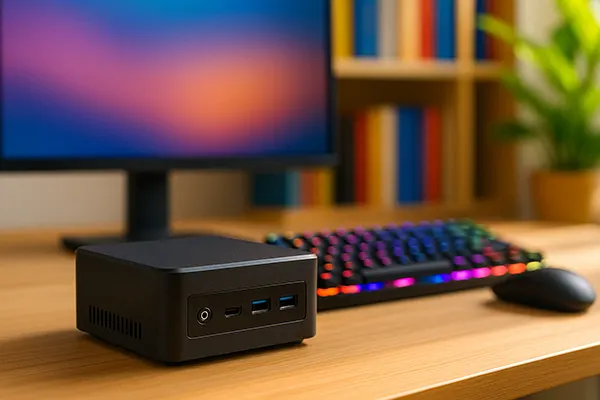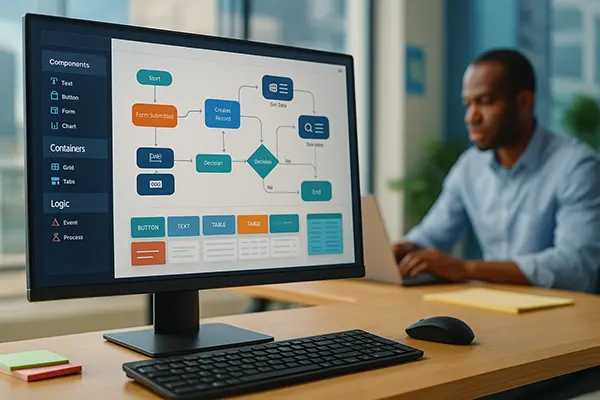
Best Mini PCs of 2025: A Smart Alternative to Traditional Desktops
Mini PCs have become increasingly popular in 2025, offering a compact and powerful alternative to traditional desktop computers. They are ideal for users seeking performance and versatility without compromising on space. With advancements in hardware and design, these miniature systems now serve as reliable tools for work, entertainment, and even light gaming.
Top Mini PC Models for 2025
Leading the charge in the mini PC market this year is the Apple Mac Mini (M3, 2025), which boasts a blazing-fast M3 chip, offering seamless performance for content creators and professionals. Its unified memory architecture allows for fluid multitasking, and despite its size, the Mac Mini handles 4K video editing with ease. A standout choice for macOS users, it balances power and form factor brilliantly.
Another remarkable contender is the Intel NUC 13 Pro X, powered by the latest Intel Core Ultra processors and designed with productivity in mind. With Thunderbolt 4, DDR5 RAM support, and Iris Xe graphics, it delivers an impressive computing experience for business and casual users alike. Its modular design also allows users to upgrade storage and memory easily.
For those on a tighter budget, the Beelink SER7 offers outstanding value. Equipped with AMD Ryzen 7 7840HS and Radeon 780M graphics, this unit supports 4K output and smooth multitasking. Despite its compact frame, it features robust thermals and comes pre-installed with Windows 11 Pro, making it an excellent choice for students and home offices.
Performance and Hardware Configurations
Performance has reached new heights in 2025, with many mini PCs adopting the latest chipsets from Intel, AMD, and Apple. Devices like the ASUS PN64 and Geekom Mini IT13 are now shipping with 13th Gen Intel Core i9 processors and LPDDR5 memory. These upgrades significantly improve speed, energy efficiency, and heat management, even during intensive use.
GPU performance has also improved. While integrated graphics still dominate most mini PCs, models like the Minisforum HX99G and Intel NUC 13 Extreme now include dedicated GPUs like the AMD Radeon RX 6650M. These systems cater to content creators and gamers who demand GPU acceleration for tasks like video rendering or gaming at 1080p.
Storage options are another key factor. NVMe SSDs have become standard, often starting from 512GB and going up to 2TB. Users benefit from rapid boot times and snappy application launches, bringing mini PCs closer in experience to high-end laptops and desktops.
Use Cases: From Home to Business
Mini PCs are increasingly replacing full-sized desktops in modern offices. Their small footprint allows for cleaner desk setups and better use of office space. Business-focused models like the HP Elite Mini 800 G9 and Lenovo ThinkCentre M90q Gen 3 offer robust performance with enterprise security features, remote management tools, and quiet operation.
At home, mini PCs serve as media hubs and smart home controllers. Models such as the NVIDIA Shield TV Pro, although technically not a PC, provide smart TV functionality and can stream 4K HDR content smoothly. Meanwhile, Windows-based systems like the GMKtec NucBox 10 allow users to run Plex servers, game emulators, and office applications with ease.
Educational institutions are also adopting mini PCs due to their affordability and durability. Devices like the ASUS Chromebox 5 are being deployed in classrooms, running ChromeOS and Google Workspace apps seamlessly. Their easy maintenance and cloud integration make them ideal for students and teachers alike.
Energy Efficiency and Sustainability
One of the main reasons mini PCs are growing in popularity is their reduced power consumption. Compared to traditional desktops, which can consume over 300W under load, many mini PCs operate below 100W even during peak usage. This efficiency translates to lower electricity bills and less heat output.
Brands are also embracing sustainable manufacturing. Lenovo and Dell, for instance, have introduced mini PCs made with recycled plastics and packaging, while also improving the energy ratings of their devices to meet ENERGY STAR and EPEAT standards. These efforts support corporate sustainability goals and eco-conscious consumer behaviour.
Moreover, mini PCs typically produce less e-waste over time. Modular systems allow for easy upgrades, and their longevity means fewer replacements. Many come with replaceable storage and RAM modules, extending their useful life and reducing the environmental footprint associated with frequent hardware upgrades.

Choosing the Right Mini PC in 2025
When selecting a mini PC this year, buyers should consider their primary use case. Creative professionals may lean towards devices with stronger GPUs and high-speed RAM, such as the Mac Studio or the Minisforum Venus series. Business users will benefit from remote management capabilities and biometric security features found in the latest ThinkCentre or EliteDesk units.
Ports and connectivity also matter. As more peripherals adopt USB-C and Thunderbolt 4, selecting a mini PC with these ports ensures future-proofing. Additionally, Wi-Fi 6E and Bluetooth 5.3 have become standard, allowing for faster, more stable wireless connections.
Price is another key factor. While premium models can exceed £1000, high-quality options under £600 are widely available. It’s essential to balance cost with performance and expansion potential. Consider warranties and brand reputation to ensure long-term support and software updates.
Future Outlook for Mini PCs
The future of mini PCs is promising. As ARM-based computing becomes more prevalent, we expect even smaller and more energy-efficient designs. AI integration at the hardware level will also unlock new use cases, particularly in edge computing and real-time analytics.
Manufacturers are already experimenting with fanless, passively cooled models for ultra-silent work environments. We’ll also see more units capable of driving multiple 8K displays, thanks to upcoming advancements in USB4 and DisplayPort 2.1 standards.
Finally, operating systems are evolving. Windows 11’s optimisations for hybrid cores and Apple’s macOS updates for Apple Silicon show that software is keeping pace with hardware innovation. This synergy will continue driving the adoption of mini PCs across various sectors in 2025 and beyond.
Popular topics
-
 Overview of New Features in Adobe Photoshop 2025
Overview of New Features in Adobe Photoshop 2025Adobe Photoshop 2025 brings a range of innovative features designed …
-
 Low-Code and No-Code: How a New Generation of Software Re...
Low-Code and No-Code: How a New Generation of Software Re...The rapid maturation of low-code and no-code tools has transformed …
-
 How to Properly Monetise an App in 2025: New Trends and E...
How to Properly Monetise an App in 2025: New Trends and E...In 2025, the app economy continues to grow at a …
-
 Dangerous browser extensions: how they steal data without...
Dangerous browser extensions: how they steal data without...Browser extensions are often seen as harmless tools that add …
-
 How to Choose the Best VPN Service for Secure Internet Su...
How to Choose the Best VPN Service for Secure Internet Su...In an era of growing cybersecurity threats and privacy concerns, …
